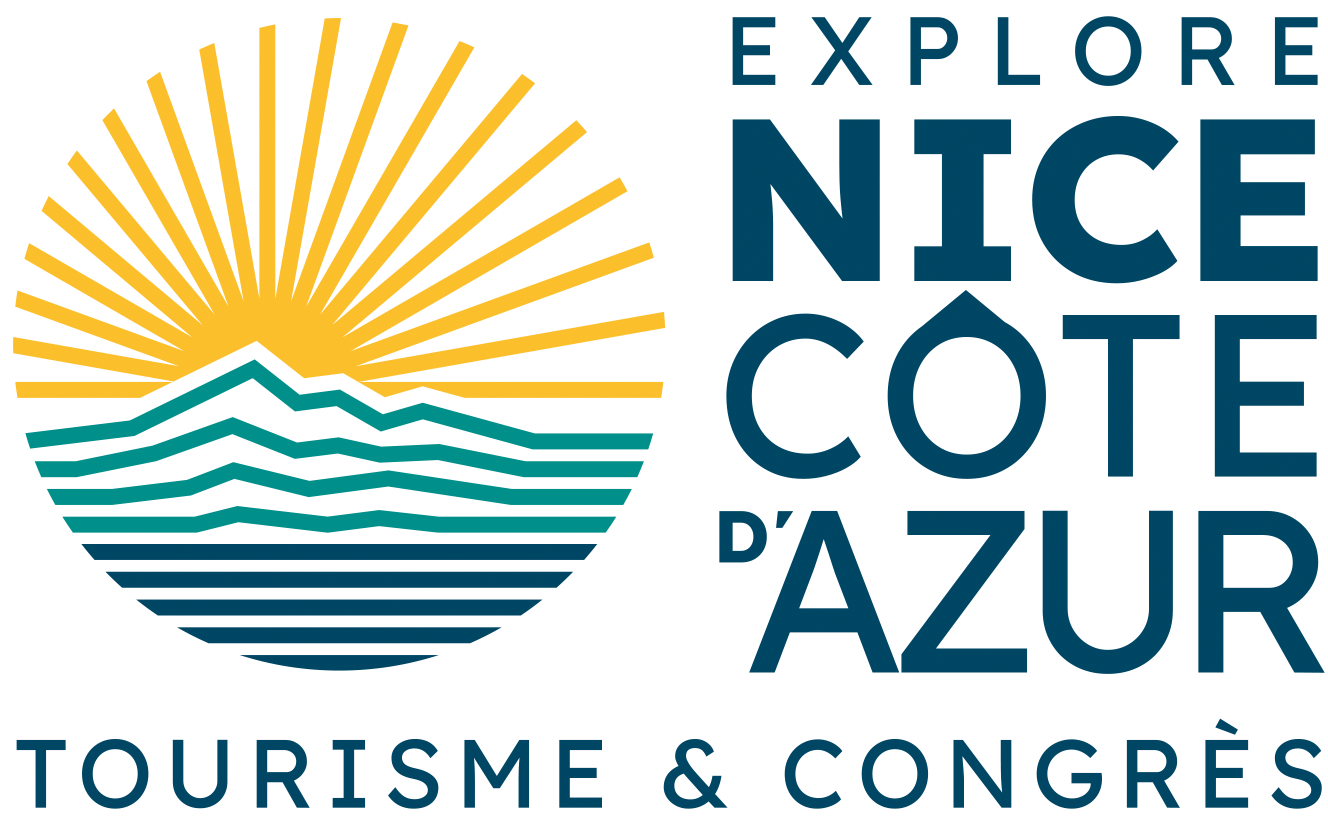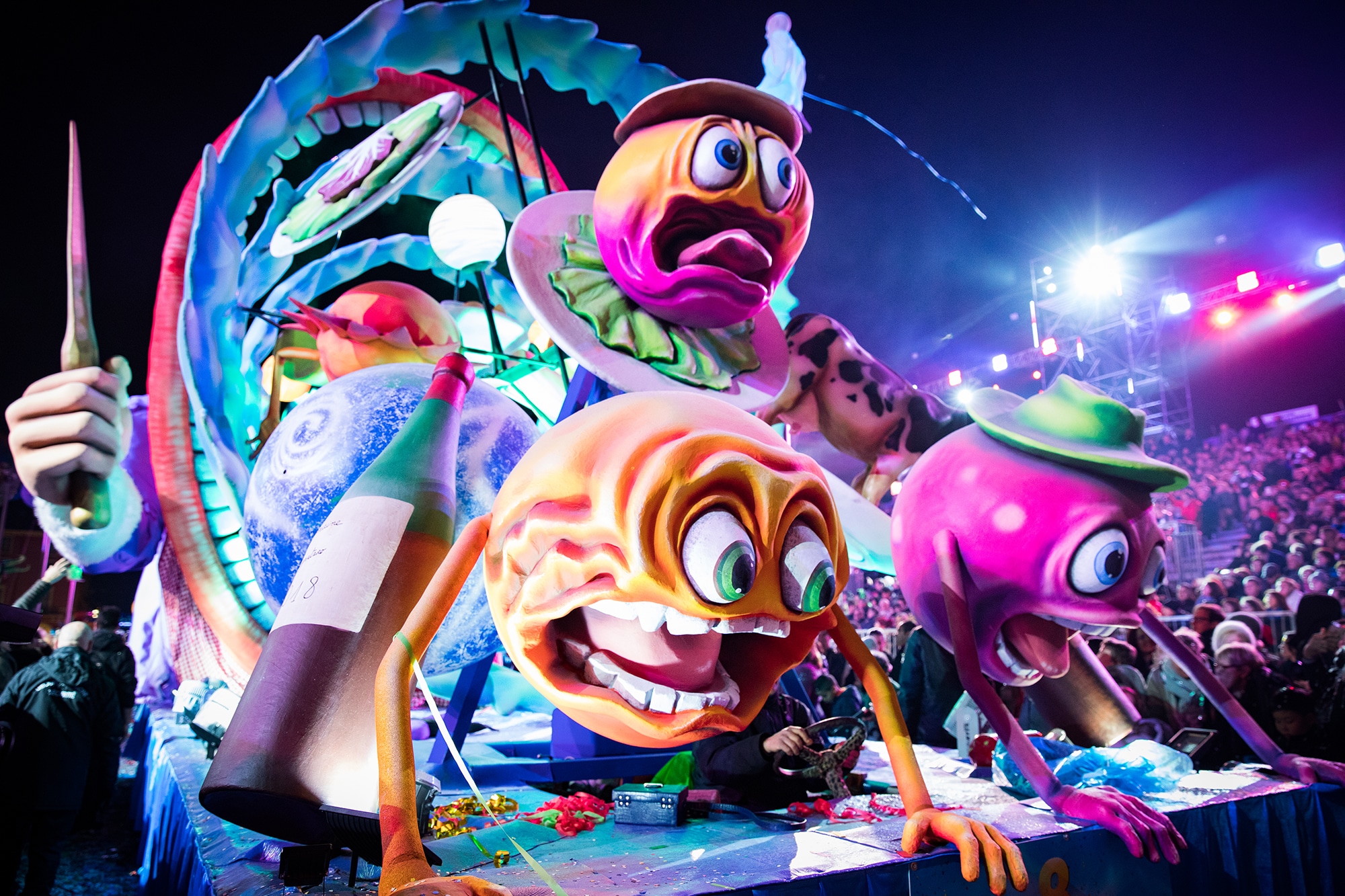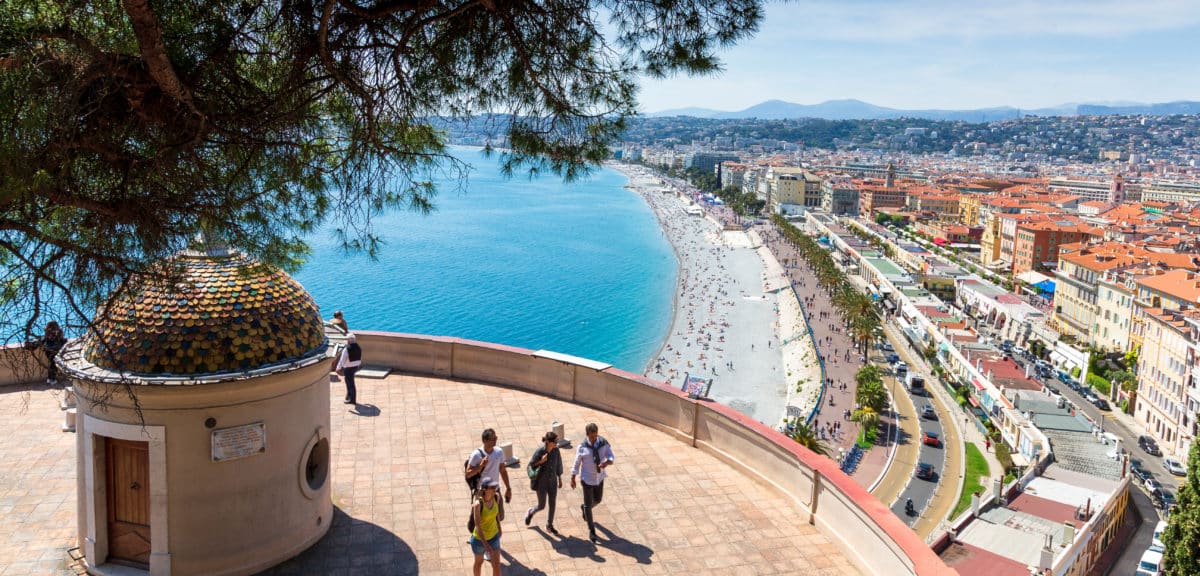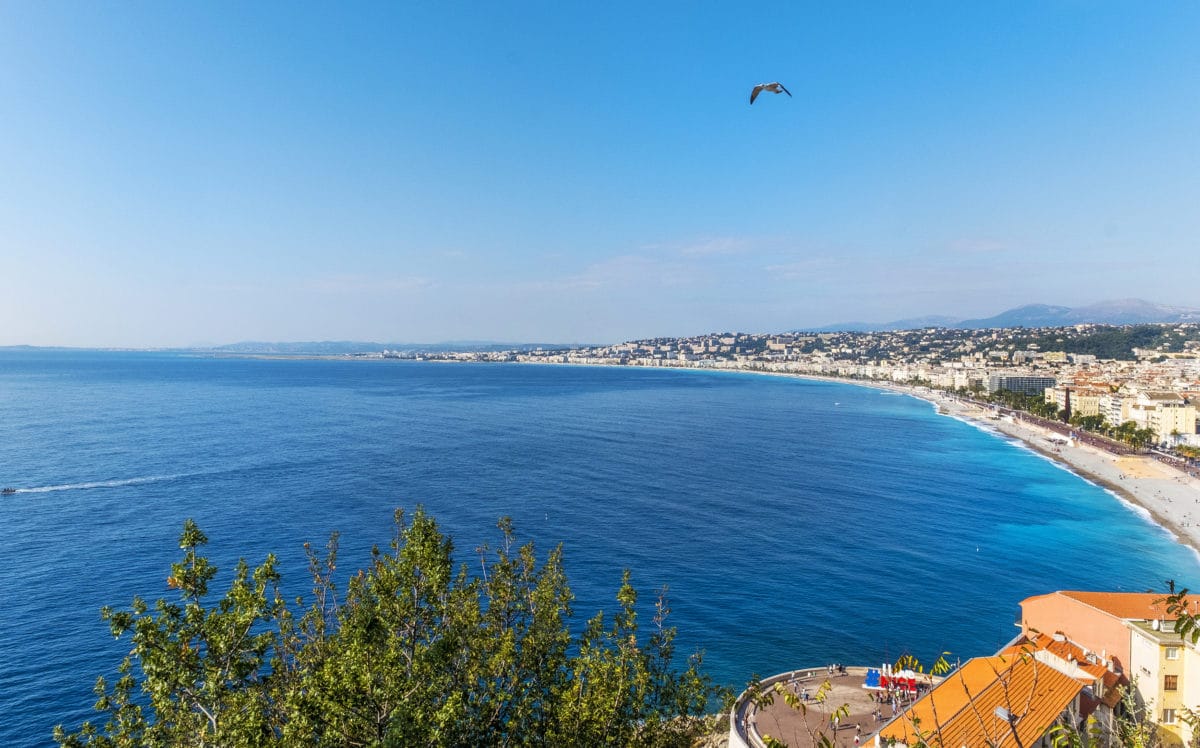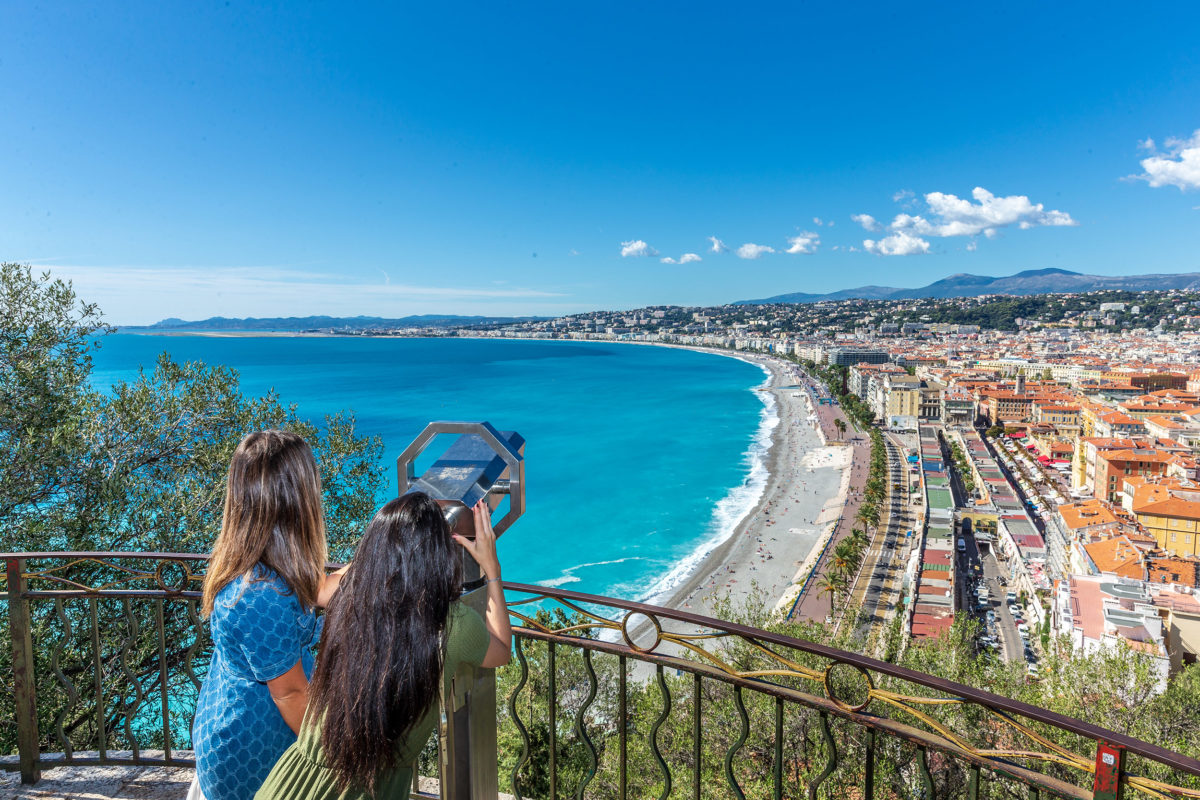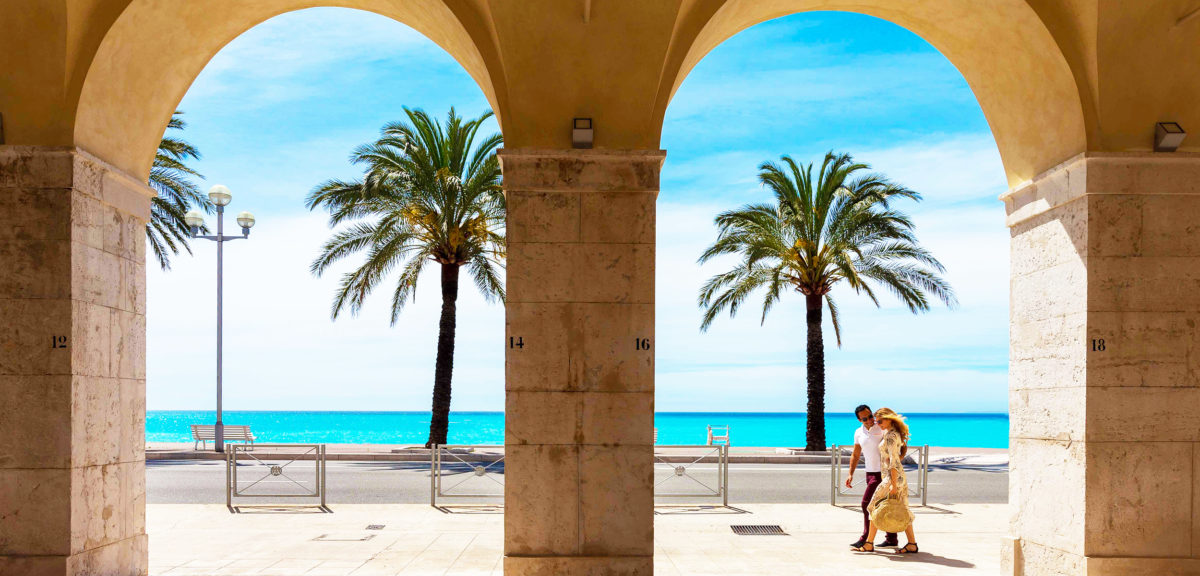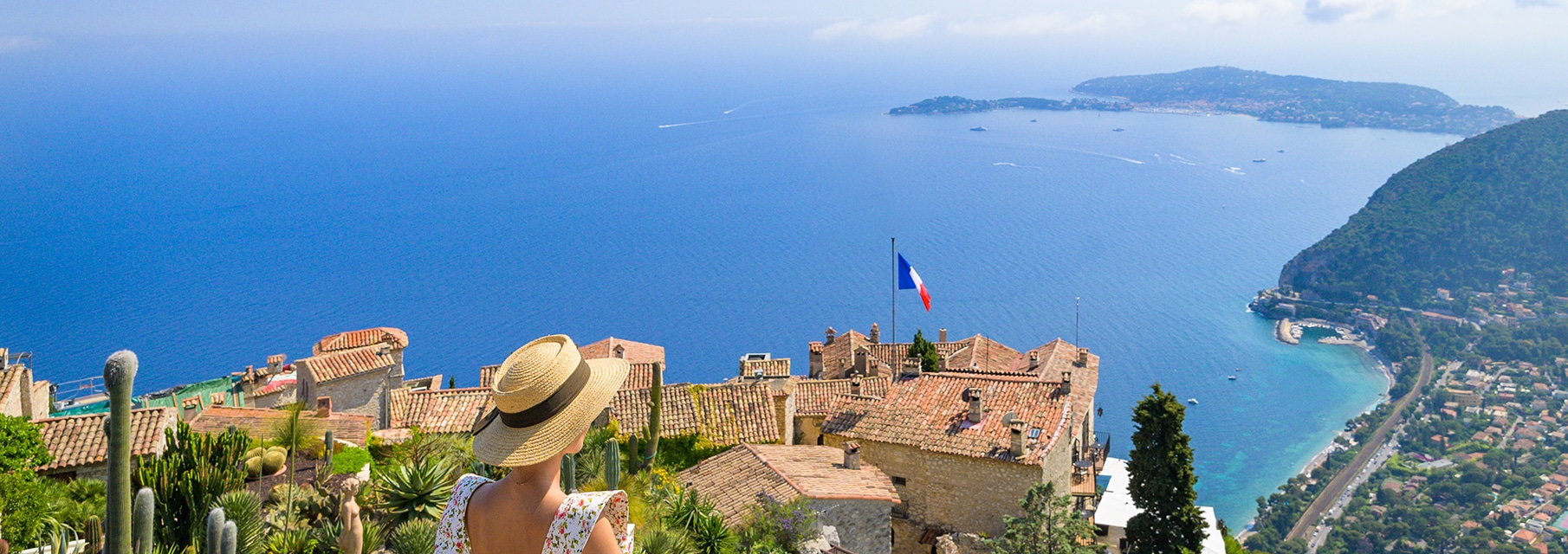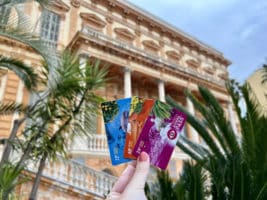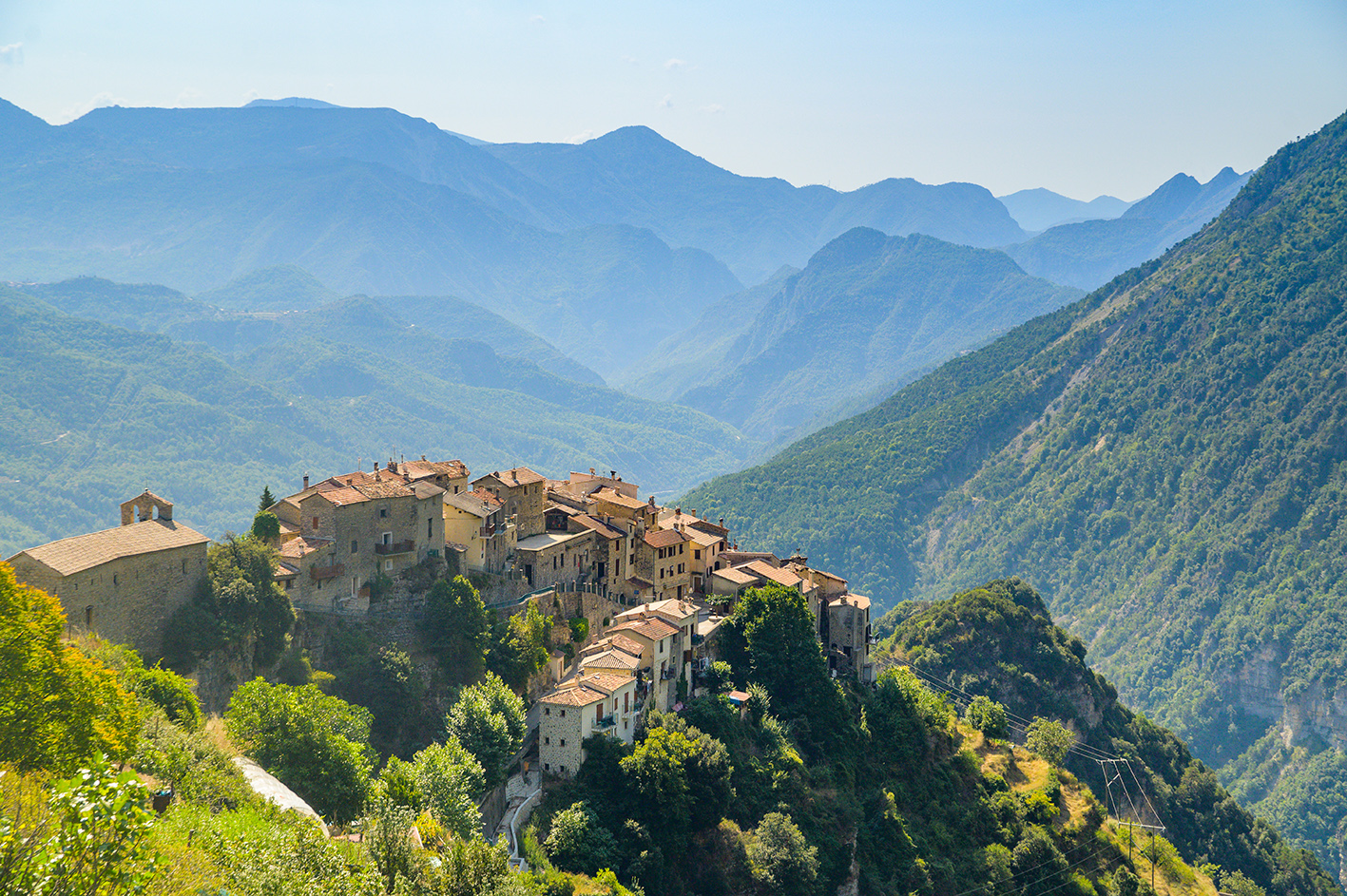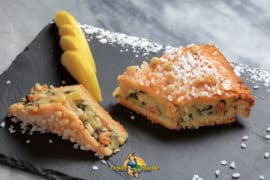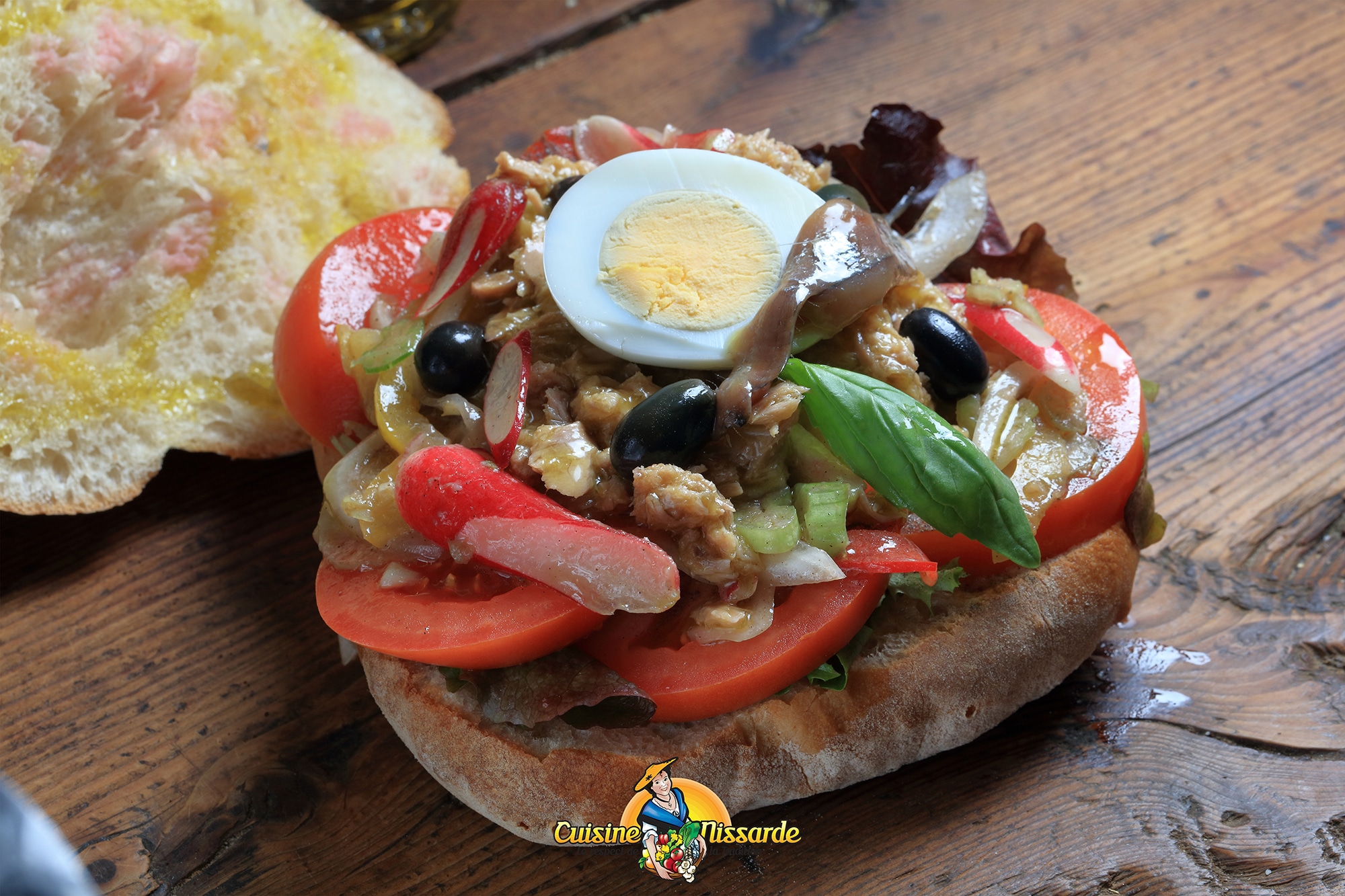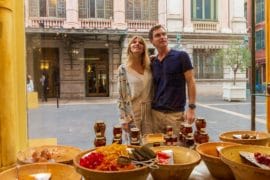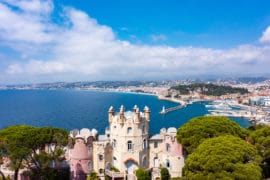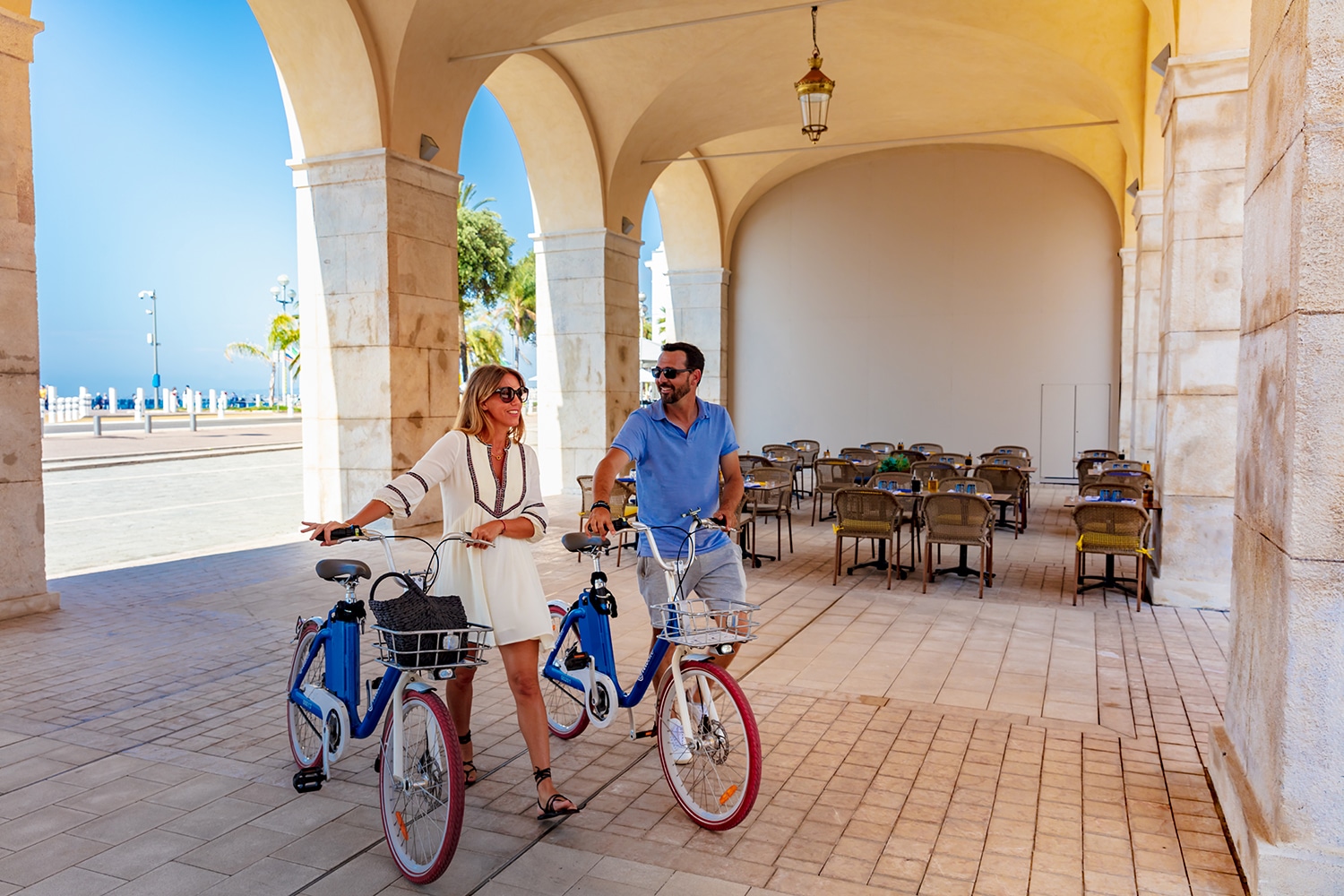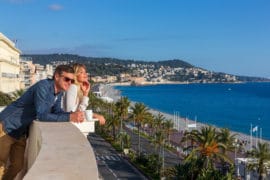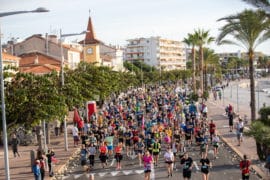Inside the preparations for the Nice Carnival!
7 January 2024
The Nice Carnival takes place over two weeks and three weekends in February, attracting several hundred thousand French and international spectators each year.
The Carnival alone justifies a trip to Nice. It is considered the third most important Carnival in the world, after Rio and Venice. Add to this the countless attractions of the region in winter and you are guaranteed a memorable stay! To whet your appetite, I’ll let you in on the secrets of the Nice Carnival… Follow me, I will open the doors of the workshops where the magic is prepared…
The Nice Carnival in figures
- 14 carnival floats
- 400 metres of fabric to make the King’s float
- 100 entertainer Big Heads
- 1,000 street performers and musicians
- 14 Flower Battle floats
- 5 tons of mimosas and other flowers distributed to the public at each Flower Battle
- 3,000 flower stems per float
- 80% of flowers are produced in the region
- 1,800 people mobilised
- 90 minutes on average per show
- 20 tons of confetti per edition
The origin of the Nice Carnival
The origin of the word Carnival goes back to the Middle Ages and is probably derived from the words “carne levare” meaning “take off the flesh”. It was a time for feasting before the 40 days of abstinence and lean cooking imposed by Lent. Carnival was therefore a pretext for all kinds of excesses.
During the Renaissance, carnival balls and masquerades were held in the narrow streets of the city. The crowd was bombarded with plaster, flour and eggs! But it was in 1873 that the event took root in modernity. Andriot Saetone from Nice took the initiative of founding a “Festival Committee” in charge of organising festivities for the wealthy winter visitors to Nice. The Carnival became a real spectacle with float parades. In 1876, the Flower Battle were created.
Carnival today
The Nice Carnival is part of the city’s DNA. It is Nice’s best-known event and is recognised throughout the world. Constantly renewed (the theme changes every year) and in step with the times (the production techniques evolve), the show combines innovation, impertinence and tradition, to the delight of young and old alike!
The Carnival brings together two types of parades: the Corso Carnavalesque – by day or by night – and the Naval Flower Battle. All parades take place outdoors, on the Place Masséna and around the Jardin Albert 1er. The public can attend the festivities either seated in the stands (numbered seats) or standing in the promenades.
Behind the scenes, passion and inventiveness are expressed with talent
The making of the floats and the big heads of Carnival
The Nice Carnival is characterised, in part, by its huge floats (up to 17m high and 12m long) and its humorous big heads, the work of the Nice Carnivalers. Craftsmen and shadow artists with a unique know-how, they work for a good part of the year around a theme imposed by the municipality. Their know-how is often perpetuated from generation to generation and involves several trades.
Indeed, to make a float, you must first of all be passionate and inventive, mastering the volume of the illustration imagined by the imagiers. Then you must master the welding of metal frames. You have to know how to create a hydraulic or mechanical mechanism to animate the float. You must also be able to sculpt polystyrene with a cutter or chainsaw, glue layers of paper, apply polyester resin, sew metres and metres of fabric, paint with an airbrush, a spray can and a brush to bring the characters to life… It is also necessary to know how to create the lighting system which, during the night parades, will give the floats a wonderful appearance.
A float is thus the result of a sum of skills and talents. Recently, new professions have made their appearance in the production chain. 3D computer graphics designers, programming engineers and industrial designers have joined the teams. And since 2019, a state-of-the-art robot has even come to help model the shapes and cut the polystyrene blocks with its giant articulated arm.
Ephemeral achievements
The carnival workers also make about a hundred Big Heads to accompany the floats. These animation elements weigh about 8kg each. Of course, each head needs a carrier. They are often young people and students. The Big Heads take an active part in the festival by playing with the public, especially the children. They are part of the identity of the Nice Carnival.
As you will have understood, the Carnival workshops are real beehives, albeit very discreet ones. In order to create a real effect of surprise and magic, when the time comes, nothing filters through during these long months of work!
And to think that all these marvellous creations are destined to be destroyed after the festival! Ephemeral but extraordinary structures that make us dream every year! Respect to the carnival people!
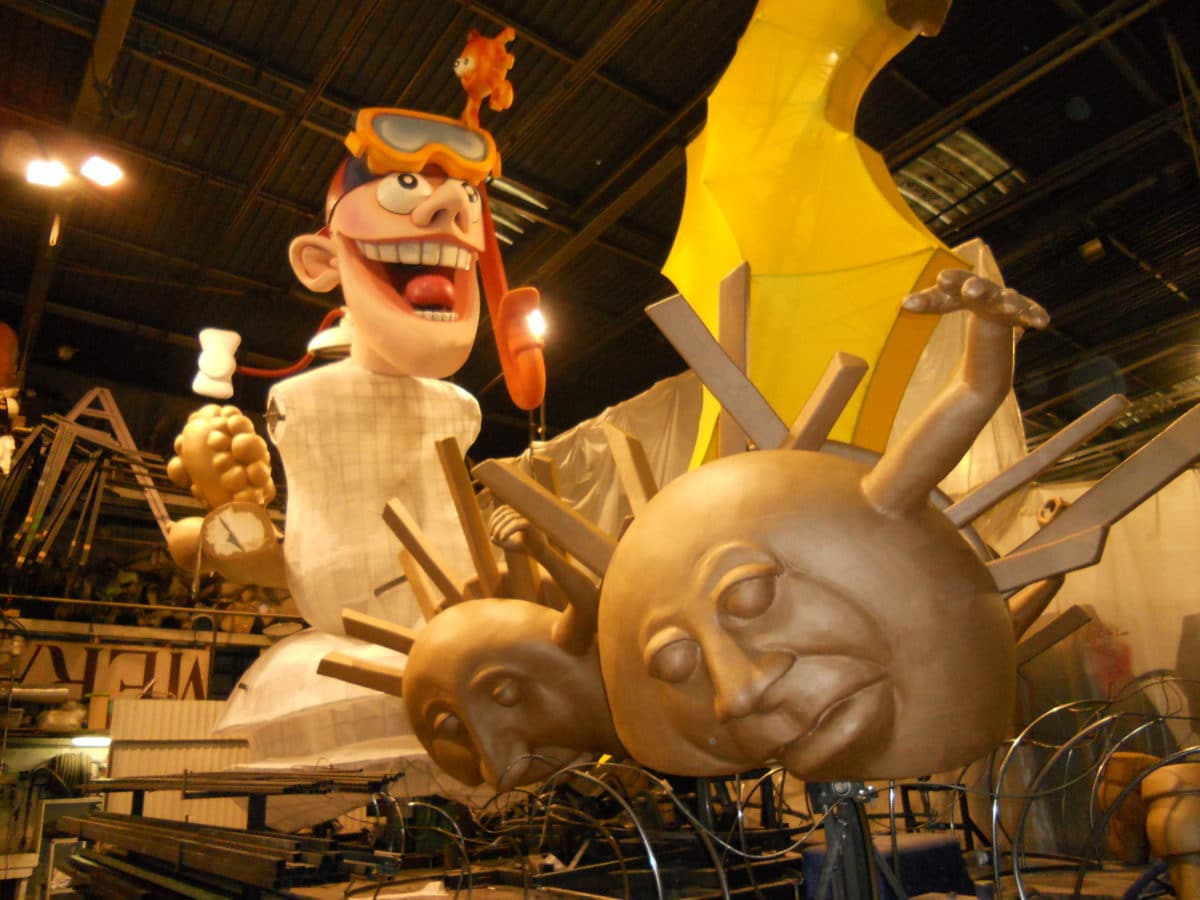
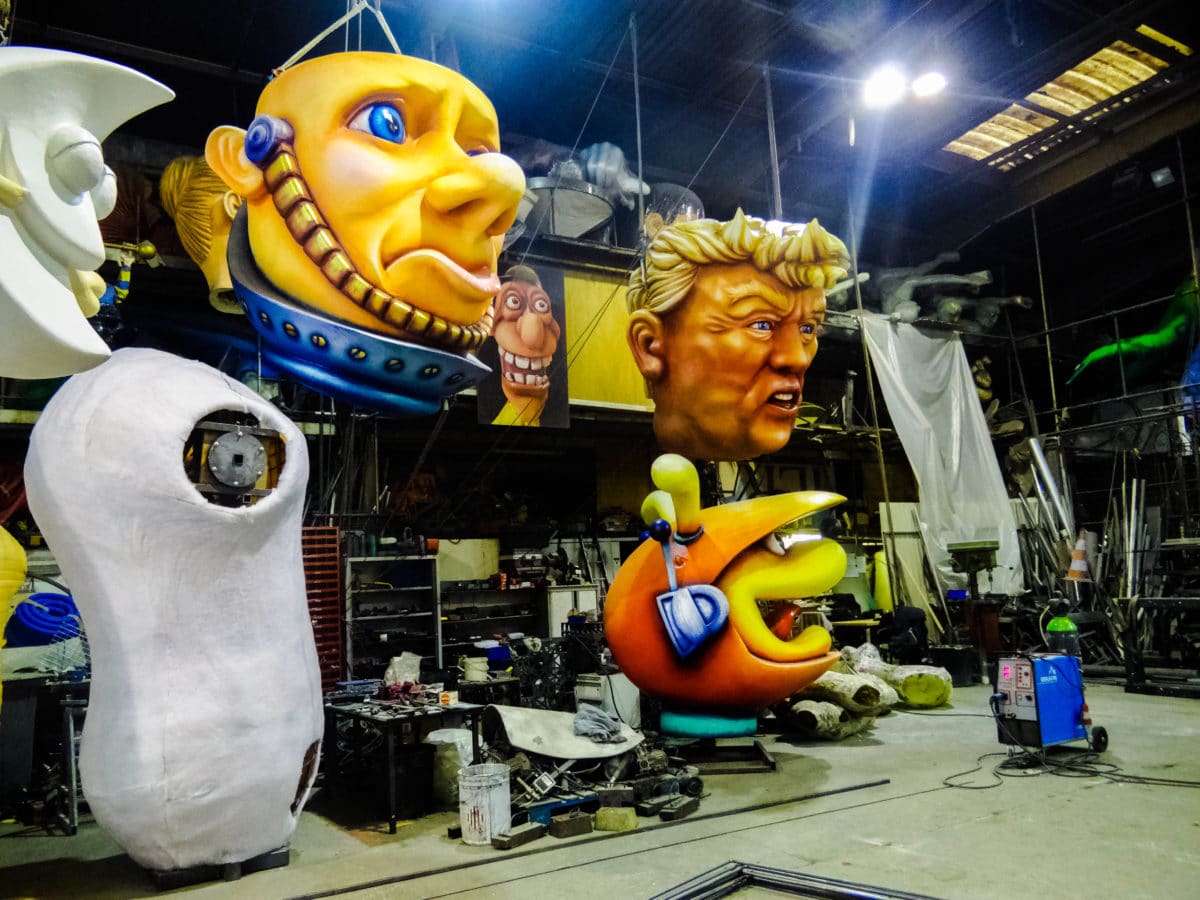
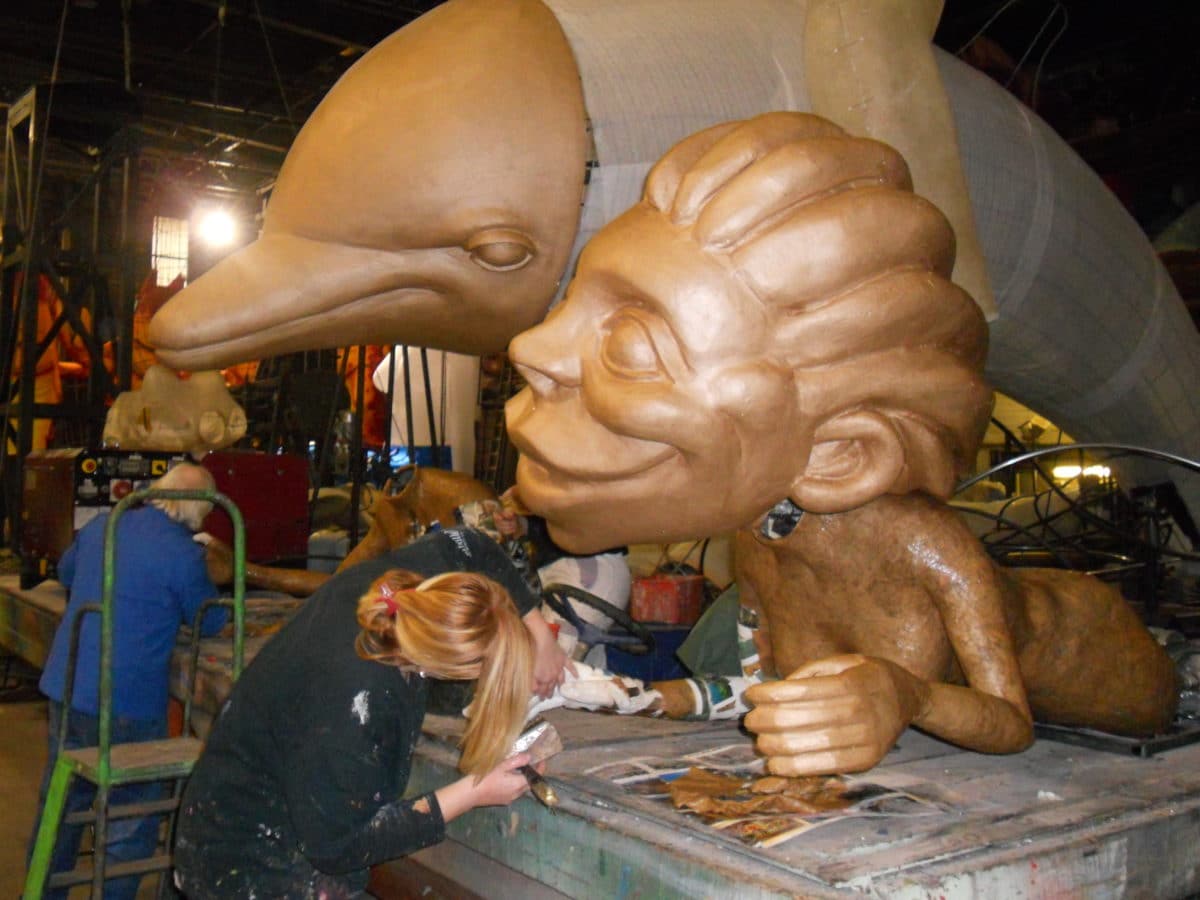
The Flower Parade Floats
The Flower Parades (or Battles) are another part of Carnival, more poetic, but inseparable from the event. The parades feature fully flowered floats on which elegant young girls send armfuls of flowers to the public. The floats are made up by florists from Nice who prick the fresh flowers onto the metal structures in the 72 hours preceding the parades. Their work adds value to some 250,000 stems of flowers, 80% of which come from local production! Doesn’t that make you dizzy?
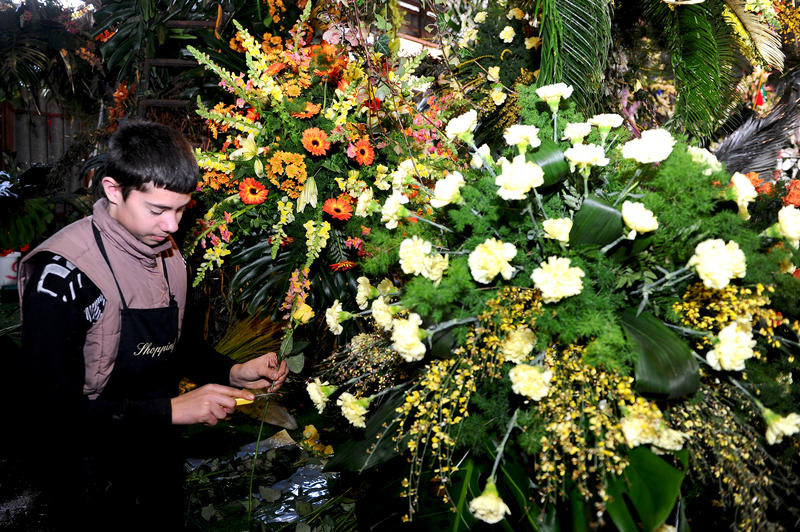
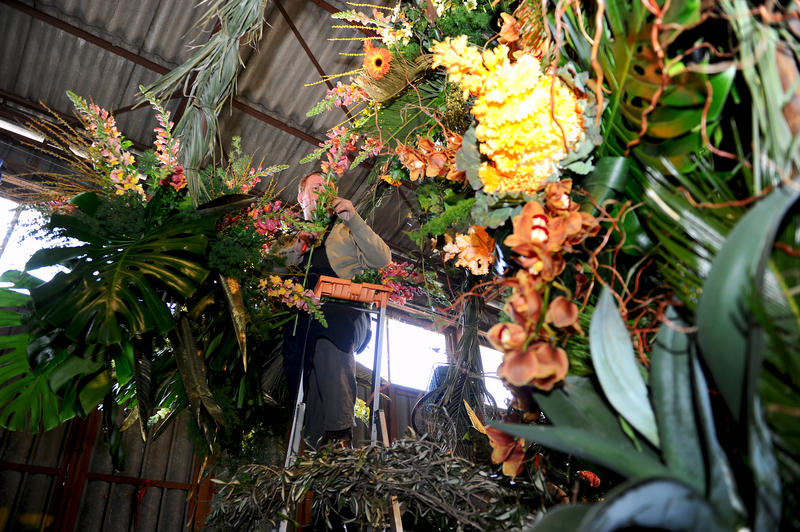
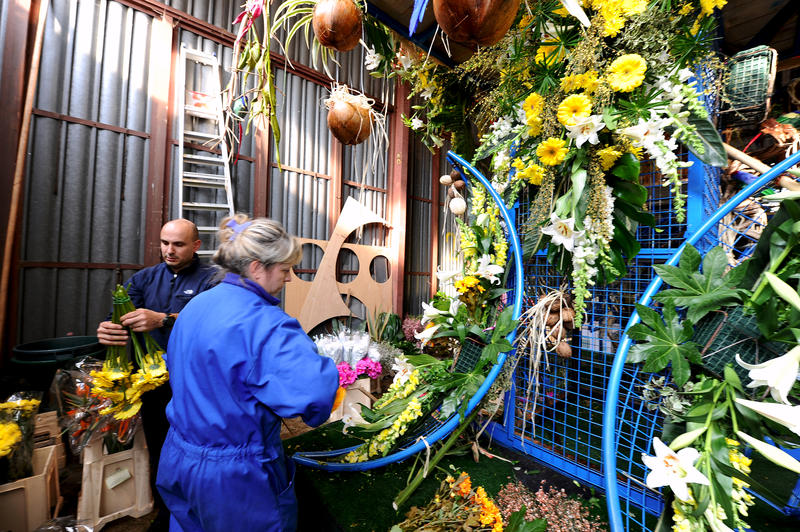
The costumes of the Flower Battle float animators
Several weeks before the event, the girls who will ride on the floats are selected through castings. Each of them will then have the privilege of wearing a magnificent costume made in a temporary workshop dedicated to Carnival by four costume designers from the world of show business. With their golden fingers, they juggle with incredible dexterity with original fabrics and materials, giving free rein to their boundless imagination. The costumes and accessories are completely new and are made according to the theme of the year. On average, it takes between 40 and 200 hours to make a costume. In the hubbub of the sewing machines, discretion is also the order of the day… until D-Day when the young girls, sublimated by these festive clothes, show the public the immense talent of these seamstresses who work for long weeks in the shadow of the workshops.
On the morning of the show, in addition to being dressed, the apprentice models are given make-up and hair styling by professional teams.
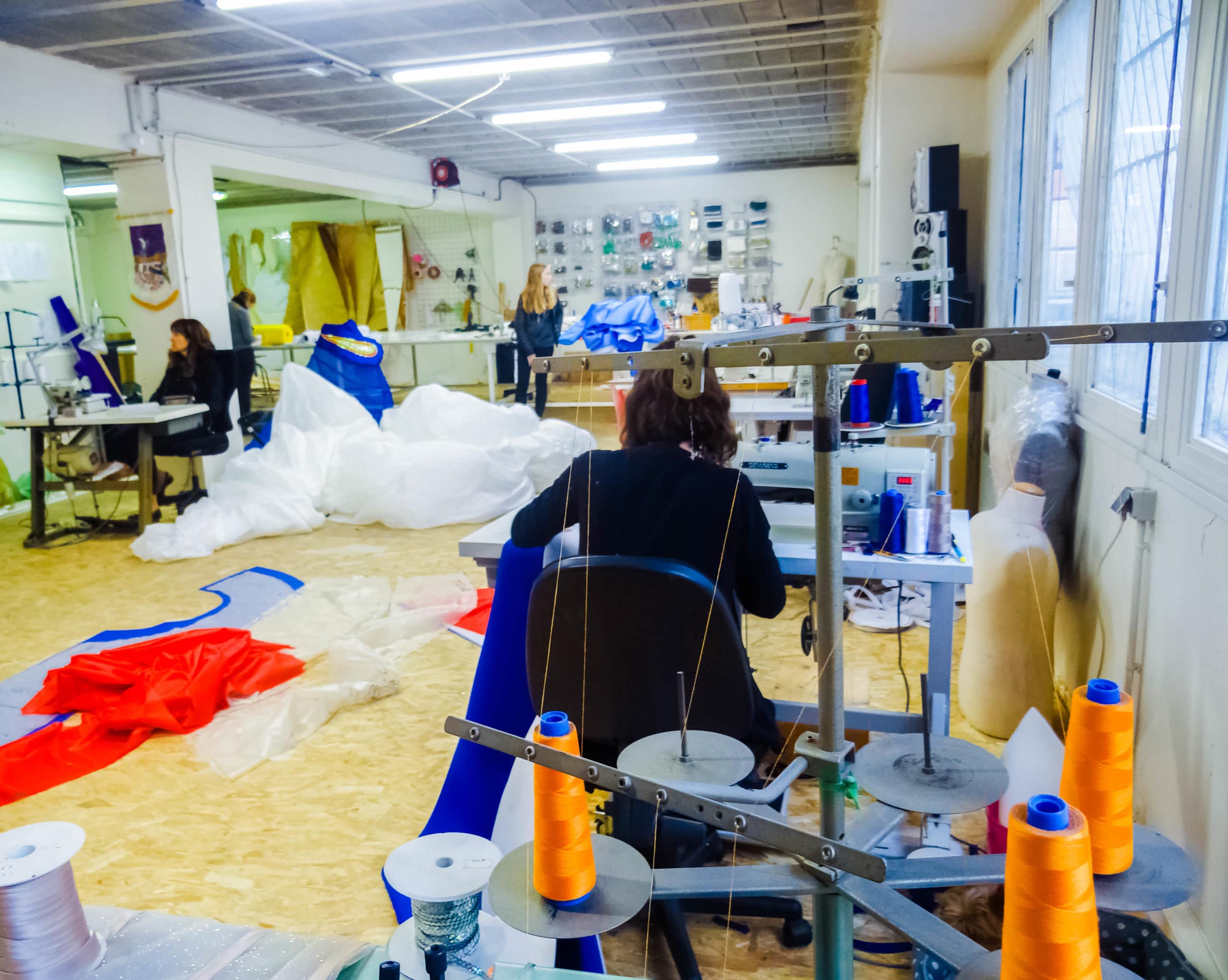
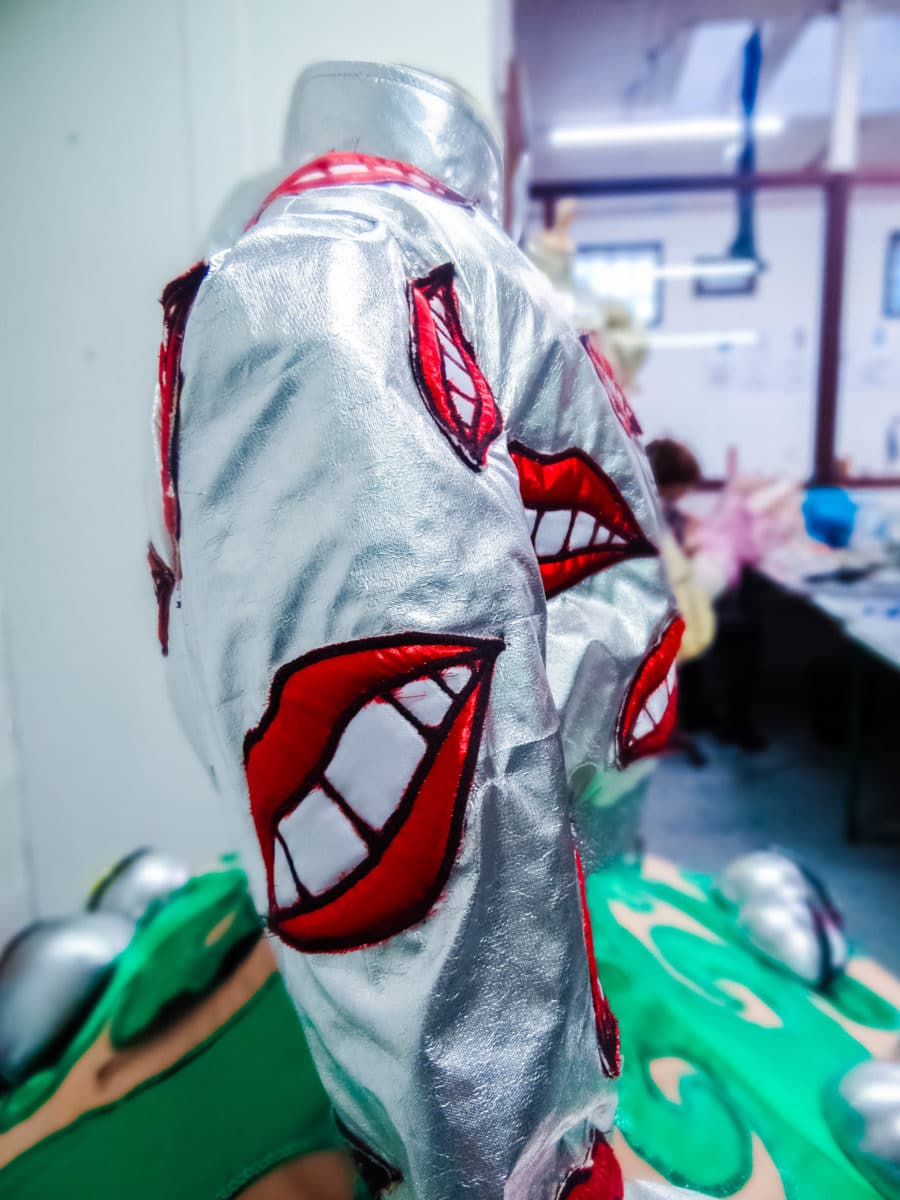
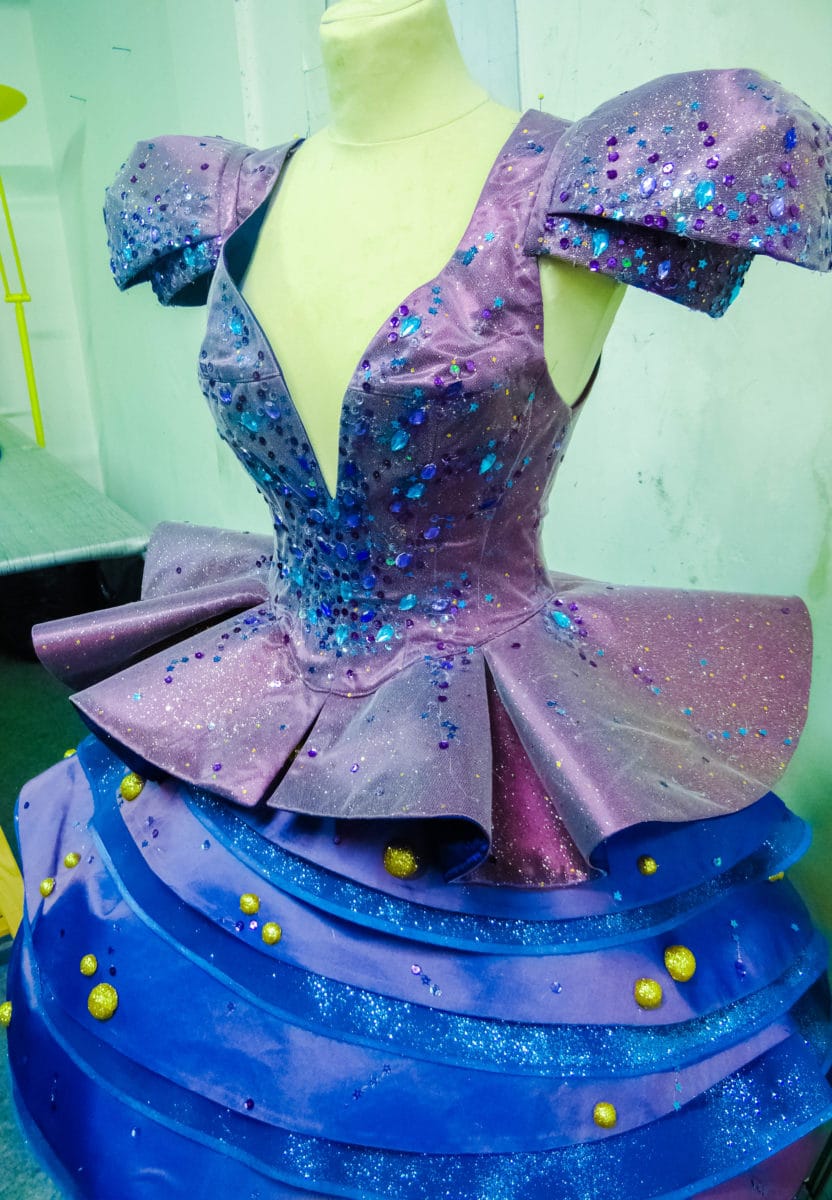
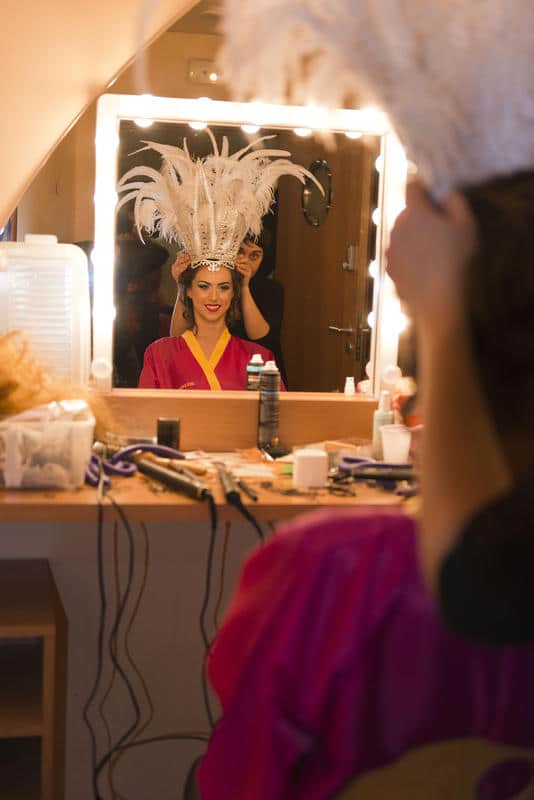
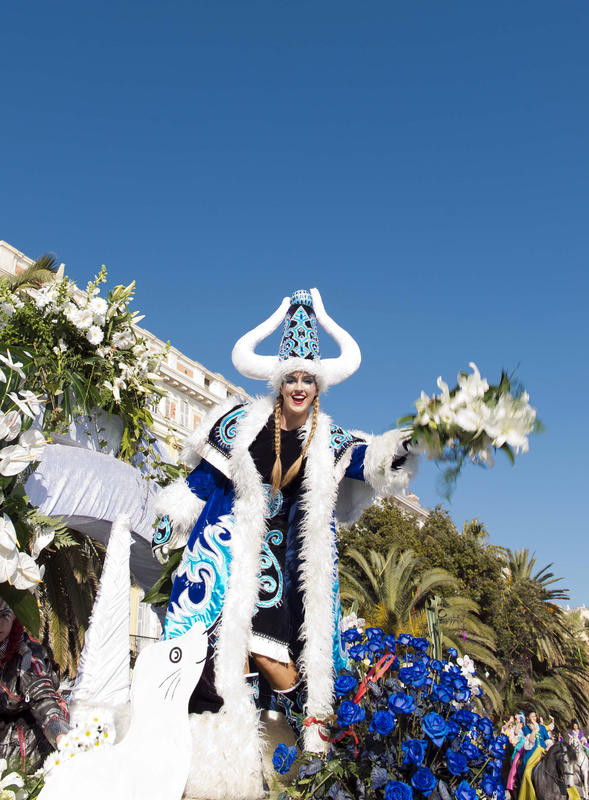
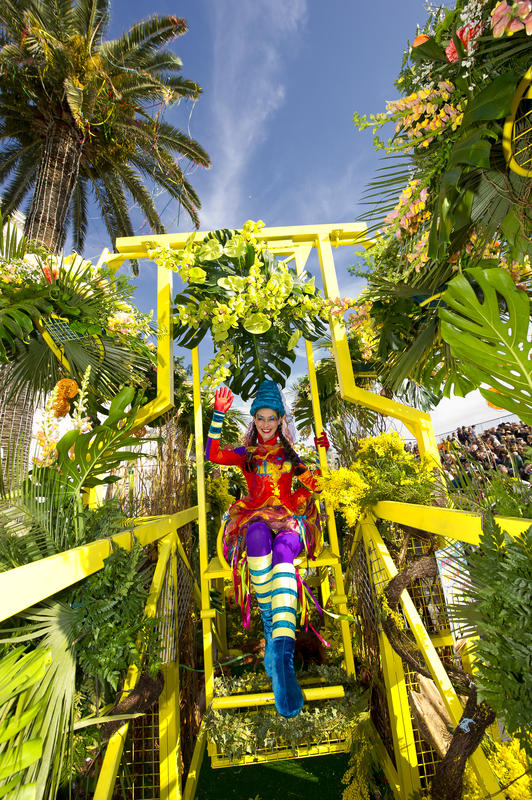
Street artists and other circus performers
What would the Carnival be without its joyful troupes of musicians and entertainers? A real international crossroads, the Carnival welcomes dozens of groups from all over the world who come to share their traditions, dances, music and artistic concepts of street and performing arts with the public. Innovation and modernity are always present, creating surprise among the conquered public.
The Carnival also has its own ephemeral animation troupe. The Brigade d’Animation des Tribunes is a group of thirty or so entertainers who are put together each year by casting their names in December. Acrobats, jugglers, tightrope walkers or contortionists, but also dancers and other people with scenic talents are transformed into “fools of the King” and “hall drivers”. Endowed with a strong energy, they inject an extra touch of madness into the stands and the procession of the Nice Carnival. A talented brigade that walks on its hands and wiggles in the stands… a formula that proves itself at each edition!
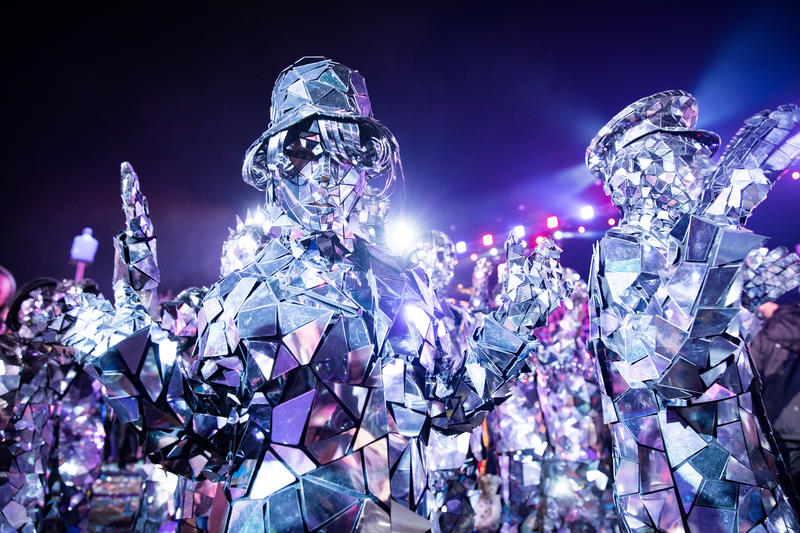
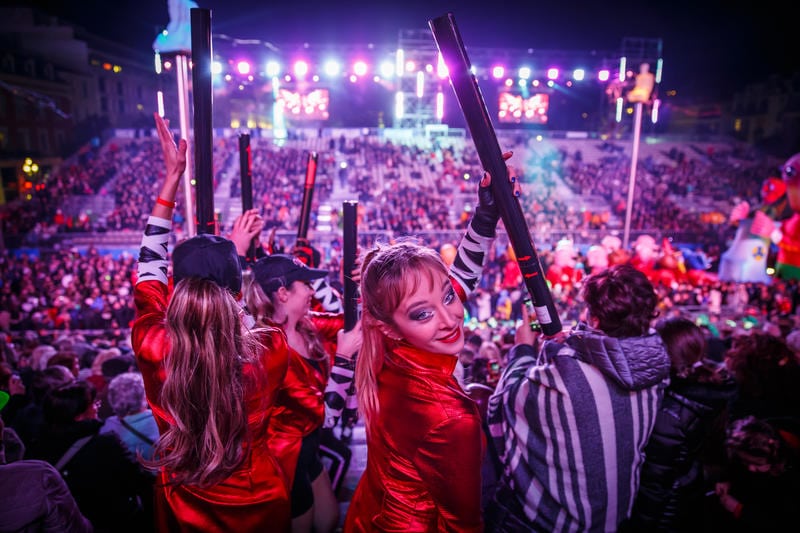
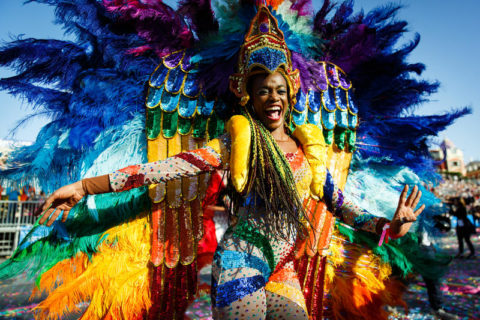
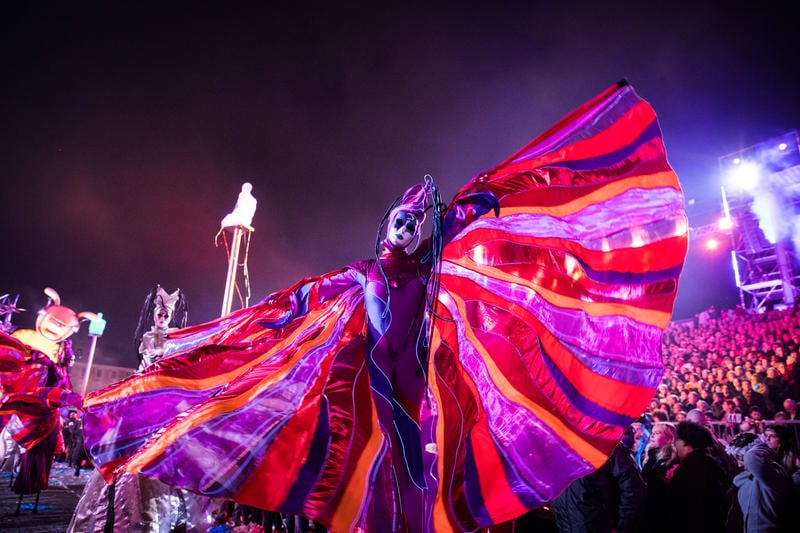
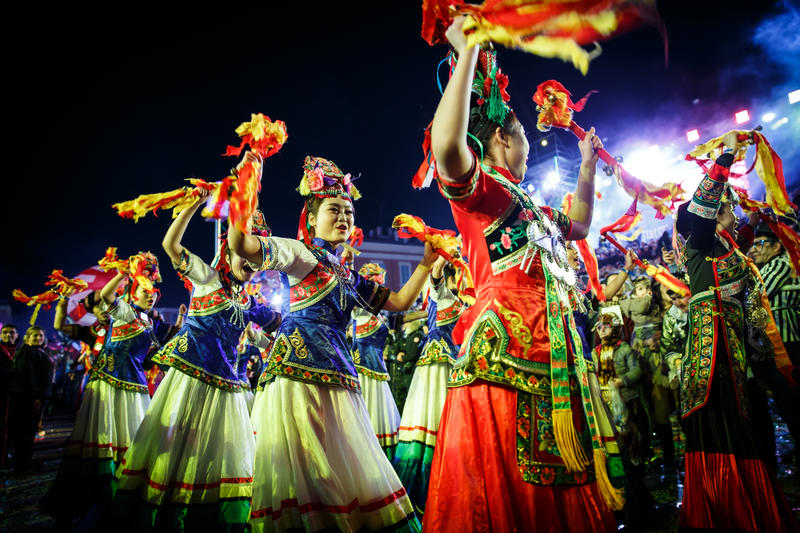
So now you know how the Nice Carnival is prepared. All that’s left is for you to come and discover or rediscover this internationally renowned event!

